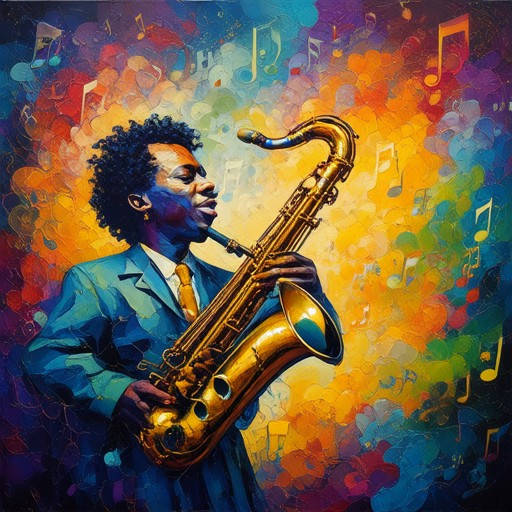Exploring the intricate world of jazz fusion music theory offers musicians a unique pathway to unlocking creative potential and mastering improvisation. This dynamic genre, born from the collision of traditional jazz and contemporary influences, has redefined musical boundaries and continues to inspire artists worldwide. At its core, jazz fusion theory encompasses the essential components of improvisation, composition, and harmonic structures that allow musicians to craft innovative sounds while maintaining a deep connection to jazz roots. From its emergence in the 1960s to its modern-day evolution, jazz fusion has become a global phenomenon, blending elements of funk, rock, Latin, and world music to create a rich tapestry of sonic exploration. Whether you’re a seasoned musician or a curious learner, delving into the principles of jazz fusion theory opens doors to a world of endless possibilities, enabling you to refine your improvisation skills and develop a distinctive voice in music.
Key Takeaways
– Improvisation is key in jazz fusion, enabling spontaneous melodic and harmonic explorations.
– Rhythmic complexity is central, with polyrhythms and syncopation driving dynamic performances.
– Creative harmony and melody define jazz fusion, often involving chromaticism and unconventional progressions.
– Cross-cultural influences shape the genre, blending African, Latin, and Asian traditions for a global sound.
– Balanced composition and arrangement merge structured parts with improvisational freedom.
– Collaboration is essential, fostering collective creativity and cohesive ensemble interaction.
– Mastering jazz fusion theory enhances your improvisation skills, offering practical tools for expressive performance.

Essential Components of Jazz Fusion Music Theory
Jazz fusion, a dynamic and eclectic musical style, incorporates elements from various genres to create a unique soundscape. Here are the key components of its music theory:
- Improvisational Techniques : At the heart of jazz lies improvisation, where musicians create spontaneous solos. In fusion, this skill is refined, often involving complex chord changes and intricate melodies.
- Rhythmic Complexity : Combining jazz’s syncopated rhythms with funk and Latin influences leads to intricate polyrhythms, requiring precision in timing and coordination among musicians.
- Harmonic Structures : Fusion extends traditional jazz harmony with expanded chords and unconventional progressions, drawing from rock’s power chords and funk’s grooves.
- Melodic Development : Melodies in fusion are fluid and diverse, often inspired by various genres, necessitating the ability to develop themes across different stylistic boundaries.
- Genre Influences : The theory encompasses understanding the contributions of rock, funk, Latin, and world music, each bringing unique elements like syncopation, altered scales, and cultural influences.
- Soloing Methods : Techniques vary from traditional jazz to rock’s use of effects and unconventional timbres, requiring versatility in soloing approaches.
- Arrangement Structure : Fusion often features extended forms, demanding a deep understanding of how to construct and transition between diverse sections within a piece.
- Cultural Impact : The theory reflects the cultural melting pot of cities like New York, blending African, Latin, European, and American influences to shape its unique sound and structures.
These components collectively define the theoretical foundation of jazz fusion, making it a rich and multifaceted genre.
Key Concepts of Jazz Fusion Music Theory
Jazz fusion, a dynamic and complex genre, blends elements from jazz, funk, rock, and world music. Understanding its theoretical foundation requires grasping several essential concepts that define its unique sound and structure. Below are the primary principles of jazz fusion music theory:
- Improvization Techniques :
Jazz fusion places a strong emphasis on improvisation, allowing musicians to innovate and explore melodies, harmonies, and rhythms in real-time. This spontaneity often leads to unexpected twists and creative solos, distinguishing it from rigid genres like classical or traditional jazz. - Harmonic Structures :
Fusion typically uses complex chord progressions and modulations, drawing from both jazz and rock influences. Artists often experiment with non-functional harmonies, creating a sense of dissonance and unpredictability that sets fusion apart from conventional jazz. - Rhythmic Patterns :
The rhythmic foundation of jazz fusion often incorporates syncopated grooves and polyrhythms, influenced by funk and Latin music. Drummers and bassists play a pivotal role in establishing the groove, which serves as the backbone for soloists and vocalists. - Scales and Melodic Development :
Musicians in the genre frequently employ extended scales and modal frameworks, moving beyond the limitations of the basic major and minor scales. This allows for greater melodic diversity and expression. - Composition and Arrangement :
While improvisation is central, many jazz fusion pieces are carefully composed, incorporating intricate arrangements and counterpoint. This balance between spontaneity and structure creates a sophisticated listening experience. - Fusion of Genres :
Jazz fusion’s defining characteristic is its synthesis of various musical styles. Artists draw from funk, rock, world music, and even classical influences, creating a hybrid sound that defies categorization. - Instrumentation and Role of Soloists :
Fusion ensembles often feature a lead vocalist, saxophonist, or instrumentalist alongside a backing band. The interplay between these roles is crucial, with soloists showcasing their technical prowess while remaining supportive of the collective sound. - Use of Space and Silence :
Musicians in fusion often incorporate pauses, silence, or space to allow for atmospheric builds and dramatic moments. This technique enhances emotional impact and provides a contrast to the energetic passages. - Cultural Influences :
Jazz fusion reflects the cultural melting pot of its origins, blending African, Latin, Asian, and European musical traditions. This cultural synthesis is evident in the genre’s global appeal and diverse subgenres. - Technique and Innovation :
Fusion players are known for their high level of technical skill and innovation. They constantly push boundaries, exploring new sounds and techniques that challenge traditional norms.
By mastering these concepts, musicians can navigate the complexities of jazz fusion and contribute to its evolving legacy. Whether through virtuosic improvisation or thoughtful composition, the genre continues to inspire new generations of artists.

Foundational Elements of Jazz Fusion Music Theory
Jazz fusion theory is rooted in the blending of jazz with other musical genres, creating a unique soundscape that defies traditional boundaries. Below are the core components that define jazz fusion music theory:
- Scales and Chord Progressions : Jazz fusion builds upon the fundamental scales and chord progressions of jazz, but expands them with influences from rock, funk, and world music. Understanding the major and minor scales, along with their extensions, is essential for navigating the harmonic landscape of fusion.
- Rhythms and Grooves : Fusion often features complex polyrhythms and syncopated grooves. These rhythmic elements come from influences like funk, Latin music, and African drumming, creating a driving force that underpins the genre’s energy.
- Improvisation : At its core, jazz fusion requires improvisation. Musicians are expected to innovate on the spot, drawing from a vast array of influences and techniques learned from diverse musical traditions.
- Cross-Genre Influences : Fusion incorporates elements from rock, funk, Latin jazz, and even classical music. This eclecticism allows for a wide range of sonic experimentation and creative expression.
To master jazz fusion theory, musicians must understand these elements and how they intersect. Practicing with Tiger Funk ‘s comprehensive guides can help players develop a solid foundation in this dynamic genre.

The Fundamental Principles of Jazz Fusion Music Theory
Jazz fusion is a dynamic and complex genre that merges elements of jazz, funk, rock, and world music. To master its theoretical foundations, musicians must understand several key principles. Below are the essential components of jazz fusion theory:
1. Improvisation
Improvisation lies at the heart of jazz fusion. Musicians often create solos and harmonies on the spot, combining melodic motifs with intricate rhythms. This spontaneity allows for unique interpretations of compositions.
2. Rhythmic Complexity
Jazz fusion often features polyrhythms, where multiple rhythms are played simultaneously. This complexity comes from influences like funk and Latin music, requiring precise timing and coordination among band members.
3. Harmony and Melody
While jazz fusion doesn’t always stick to traditional harmonic structures, it does emphasize creative melodies and harmonies. Players often manipulate scales and chords to create fresh sounds, drawing from various musical traditions.
4. Cross-Cultural Influences
Jazz fusion draws from diverse musical cultures, including African, Latin, and Asian traditions. This global approach leads to innovative sounds and rhythmic patterns, making it a uniquely versatile genre.
- Example: Herbie Hancock’s “Chameleon” blends jazz with funk and hip-hop elements.
- Another example: Weather Report’s “Cobbler” showcases progressive rock influences within a jazz framework.
5. Composition and Arrangement
While improvisation dominates, many jazz fusion pieces are carefully composed. Arrangements often integrate written parts with spontaneous solos, creating a balance between structure and freedom.
6. Collaboration and Interaction
Jazz fusion thrives on collaboration. Musicians often exchange solos and ideas, leading to spontaneous compositions. This interactive approach fosters a sense of collective creativity.
Conclusion
Understanding these principles allows musicians to navigate the vast possibilities of jazz fusion. Whether through improvisation or composition, the genre remains a testament to musical innovation and cultural exchange.
For deeper exploration, visit Tiger Funk to discover more about funk, soul, and jazz fusion.
The Key Elements of Jazz Fusion Music Theory
Jazz fusion, a genre that combines elements of jazz with influences from rock, funk, and world music, has its own distinct set of principles and practices. Here are the key components of jazz fusion music theory:
- Improvization : At the core of jazz is the ability to improvise. Musicians develop solos and harmonies on the spot, creating spontaneous compositions during live performances.
- Composition : While improvisation is key, many jazz fusion pieces are composed. This involves structuring melodies, harmonies, and rhythms before performing.
- Rhythms : Jazz fusion often incorporates complex and varied rhythms, including syncopation, polyrhythms, and meter changes, which can challenge traditional time signatures.
- Melody and Harmony : Jazz fusion typically features intricate melodies and harmonies, often utilizing chromaticism and unconventional chord progressions.
- Scales and Modes : Musicians in jazz fusion use a variety of scales and modalities, often combining elements from different musical traditions.
- Orbits and Chord Progressions : Understanding how chords and voicings move through a piece is fundamental to jazz fusion theory, contributing to the music’s harmonic complexity.
- Arranging and Ensemble Playing : Effective arranging ensures that individual contributions cohesively blend into a unified sound, requiring strong leadership and collaboration skills.
- Form and Structure : Pieces often take unconventional forms, incorporating themes, variations, and modulations that defy traditional structural norms.
- Cultural Influences : Jazz fusion reflects diverse cultural influences, blending African, Latin, Asian, and European musical elements to create a global soundscape.
- Practical Application : Musicians study classic recordings, transcribe solos, and practice techniques to apply theoretical concepts in real-time performances.
By mastering these elements, musicians can navigate the dynamic landscape of jazz fusion, creating innovative and expressive music that transcends traditional boundaries.

How Can Jazz Fusion Theory Improve Your Understanding of Jazz Improvisation?
Jazz fusion theory provides a robust framework for deepening your comprehension and mastery of jazz improvisation. By exploring its core principles, you can unlock advanced techniques that elevate your performance and creative expression.
1. Harmonic Structures
Jazz fusion theory emphasizes complex harmonic structures, such as modal harmony and chromaticism, which are essential for jazz improvisation. These concepts allow you to navigate chord changes more fluidly and experiment with unconventional tonalities, enabling you to create unique melodies and riffs.
2. Rhythmic Concepts
Fusion theory introduces intricate rhythmic patterns, often incorporating polyrhythms and syncopation. Mastering these elements helps you develop a stronger sense of time feel, allowing you to play with greater precision and spontaneity during improvisations.
3. Melodic Techniques
The theory often incorporates extended melodic techniques, such as scalar lines, intervallic relationships, and motivational development. These tools empower you to craft more sophisticated solos and improvisations, giving your playing a fresh and innovative sound.
4. Compositional Strategies
Fusion theory teaches you to approach improvisation as a compositional process, where each moment is informed by musical logic and structural planning. This mindset fosters creativity and helps you construct coherent narratives within your performances.
5. Cross-Cultural Influences
By studying the blend of jazz, rock, funk, and world music influences in fusion theory, you gain insight into how different styles interact harmoniously. This knowledge enhances your ability to fuse genres and create music that defies traditional boundaries.
6. Analytical Skills
Understanding fusion theory requires analytical thinking, which is invaluable for dissecting complex improvisations. This skill allows you to deconstruct soloists’ approaches and borrow effective strategies for your own playing.
7. Repertoire Expansion
Familiarizing yourself with fusion theory can open up a wealth of repertoire, from classic albums to contemporary works. This expanded vocabulary gives you more options for expressing your artistic vision.
8. Collaborative Dynamics
The theory also explores group dynamics and communication strategies, which are crucial for ensemble improvisation. Effective collaboration ensures that every musician contributes meaningfully, resulting in richer and more cohesive performances.
9. Historical Context
Studying fusion theory provides a historical perspective on jazz evolution. This awareness helps you appreciate the roots of improvisation and understand how past innovations inform contemporary practice.
10. Application in Practice
Ultimately, fusion theory equips you with practical tools that you can immediately apply to your playing. Whether you’re composing, performing, or teaching, these concepts enhance your versatility and innovation.
By embracing jazz fusion theory, you gain a deeper appreciation for the complexities of jazz improvisation, empowering you to push boundaries and excel as a musician.





0 Comments